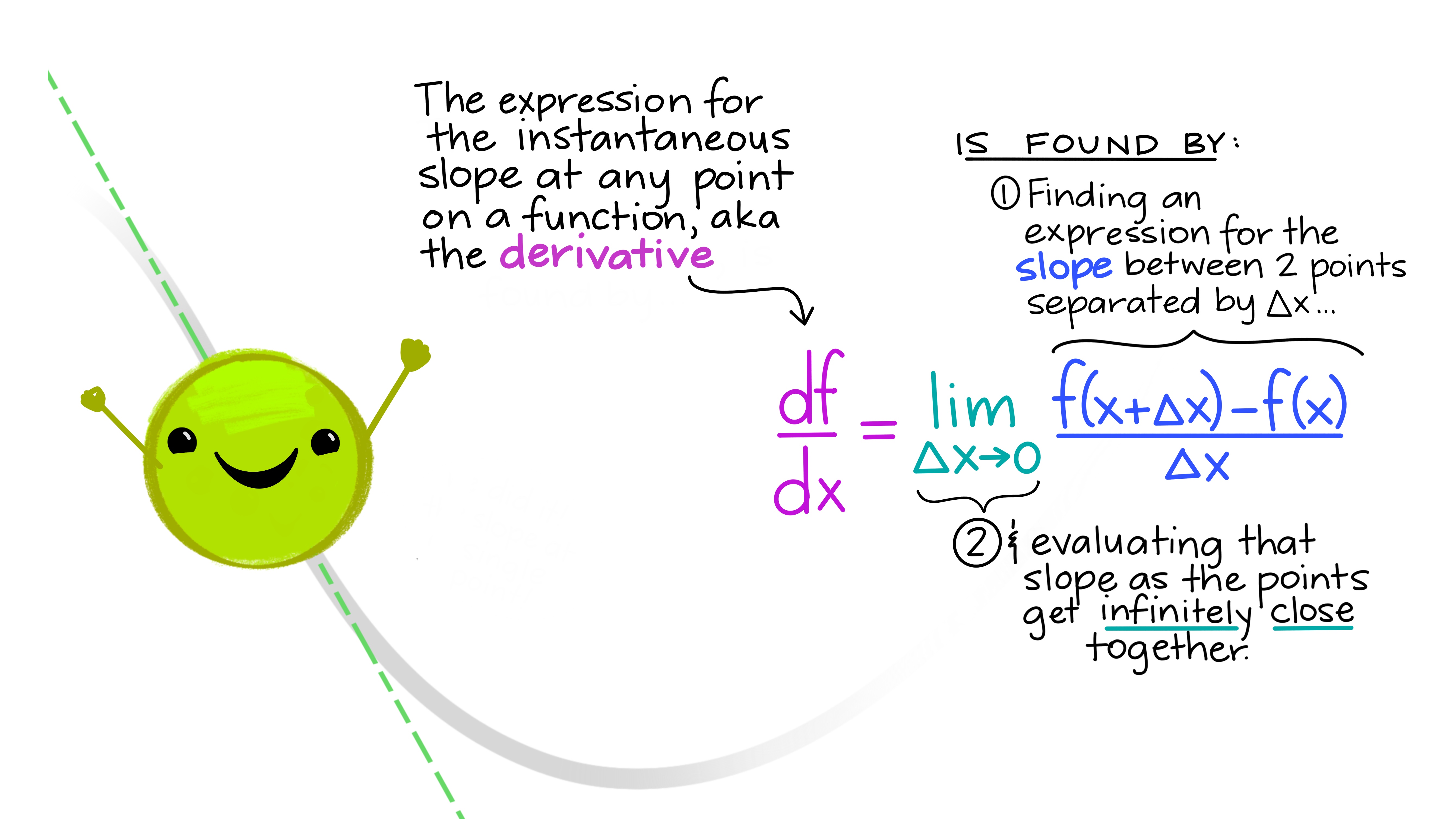class: center, middle, inverse, title-slide # EDS 212 ## Day 2 Part 2: Derivatives continued - higher order, partials, computation, & application ---  --- `$$\frac{df}{dx}=\lim_{\Delta x\to 0}\frac{f(x+\Delta x)-f(x)}{\Delta x}$$` --- ## Derivative of logs & exponents - `\(\frac{d}{dx}(e^x) = e^x\)` - `\(\frac{d}{dx}ln(x)=\frac{1}{x}\)` --- ## Applications - Minimum & maximum values (slope = 0) - Increasing & decreasing functions (bounded by critical points) - Describing rates of change is common in environmental science (rate of pollutant concentration change, rate of population growth, rate of energy consumption) --- ## Practice interpretation / math think Imagine you have a bowl of soup and you want to describe how quickly it cools off. - What do you think is the *main driver* of cooling? - What if you have a hot plate? - What does this look like in an equation? --- ## Newton's Law of Cooling `$$\frac{dT}{dt}=-k(T-T_a)+T_{in}$$` What do you think is wrapped up in `\(k\)`? --- class: center, middle # Higher order & partial derivatives --- ## Higher order derivatives Higher order derivatives are derivatives of derivatives. ### Notation - First derivative: `\(f'(x)\)` or `\(\frac{df}{dx}\)` - Second derivative: `\(f''(x)\)` or `\(\frac{d^2y}{dx^2}\)` - Third derivative: `\(f'''(x)\)` or `\(\frac{d^3y}{dx^3}\)` --- ### Higher order derivative example: Find the 3rd derivative of `$$G(z)=3z^4-8z^3+2z-19$$` `$$G'(z)=\frac{dG}{dz}=12z^3-24z^2+2$$` `$$G''(z)=\frac{d^2G}{dz^2}=36z^2-48z$$` `$$G'''(z)=\frac{d^3G}{dz^3}=72z-48$$` --- ## Partial derivatives When we find a partial derivative, we find an expression for the slope with respect to *one variable* in a multivariate function. **Mathematically**: Find the derivative with respect to a single variable, *treating all others as constants.* **Notation:** the partials of `\(f(x,y,z)\)` are `\(\frac{\partial f}{\partial x}\)`, `\(\frac{\partial f}{\partial y}\)`, and `\(\frac{\partial f}{\partial z}\)` --- ## Partial derivatives example: Find all partials of: `$$B(x,T,\rho)=0.4x^3T-3.6T^2+4\rho x$$` `$$\frac{\partial B}{\partial x}=1.2Tx^2+4\rho$$` `$$\frac{\partial B}{\partial T}=0.4x^3-7.2T$$` `$$\frac{\partial B}{\partial \rho}=4x$$` --- ### OK but what do partials actually mean? The slope with respect to one variable if other variables are held constant. Let's think about a roller coaster. How can we describe our orientation? Let us count the ways... [Commence drawing & handwaving extravaganza!] --- ## Let's try one The temperature (in Celsius) across a surface (where x and y are in meters) is described by: `$$T(x,y)=x^2y-2x+y-1$$` At what "rate" is temperature changing (with respect to distance): - In the `\(x\)` direction, at the point (1,3) on the surface? - In the `\(y\)` direction, at the point (0,2) on the surface? --- ## Another super real example A dragon's breath temperature ($T$, in degrees Celsius) is modeled as a function of its wingspan ($W$, in meters) and length ($L$, also in meters): `$$T(W,L)=0.41WL+2.6W^2$$` - At what rate is breath temperature changing with respect to length for a dragon that is 4.1m long, with a wingspan of 4.5m? - At what rate is breath temperature changing with respect to wingspan, for the same dragon? --- ## Example: higher order & partial derivatives in environmental data science The **Advection-Dispersion-Reaction Equation** for solute transport models the change in a solute concentration `\(C\)` over time `\(t\)`, where groundwater is flowing in direction `\(x\)`: `$$\frac{\partial C}{\partial t}=D_x \frac{\partial^2C}{\partial x^2} + D_y\frac{\partial^2C}{\partial y^2}+D_z\frac{\partial^2C}{\partial z^2}-v\frac{\partial C}{\partial x}-\lambda RC$$` --- .center[  ] --- ## Let's break it down. `$$\frac{\partial C}{\partial t}=D_x \frac{\partial^2C}{\partial x^2} + D_y\frac{\partial^2C}{\partial y^2}+D_z\frac{\partial^2C}{\partial z^2}-v\frac{\partial C}{\partial x}-\lambda RC$$` - Left-hand-side: Rate of concentration change (over time) - Right-hand-side first 3 terms: Concentration change due to dispersion in `\(x\)`, `\(y\)`, and `\(z\)` directions - Right-hand-side fourth term: Concentration change due to groundwater transport (in groundwater flow direction, x) - Right-hand-side final term: Reaction term (e.g. biodegradation / abiotic degradation)